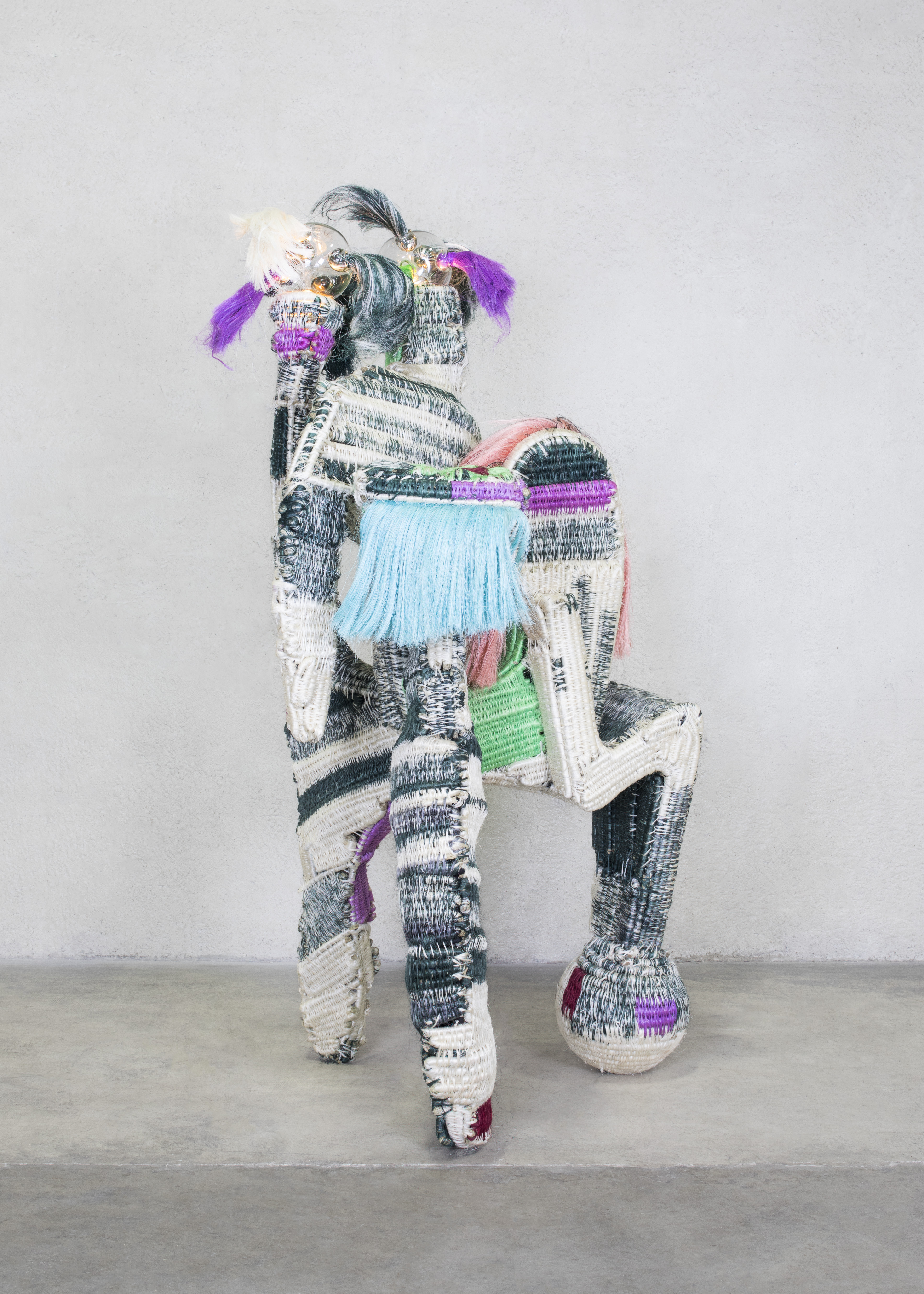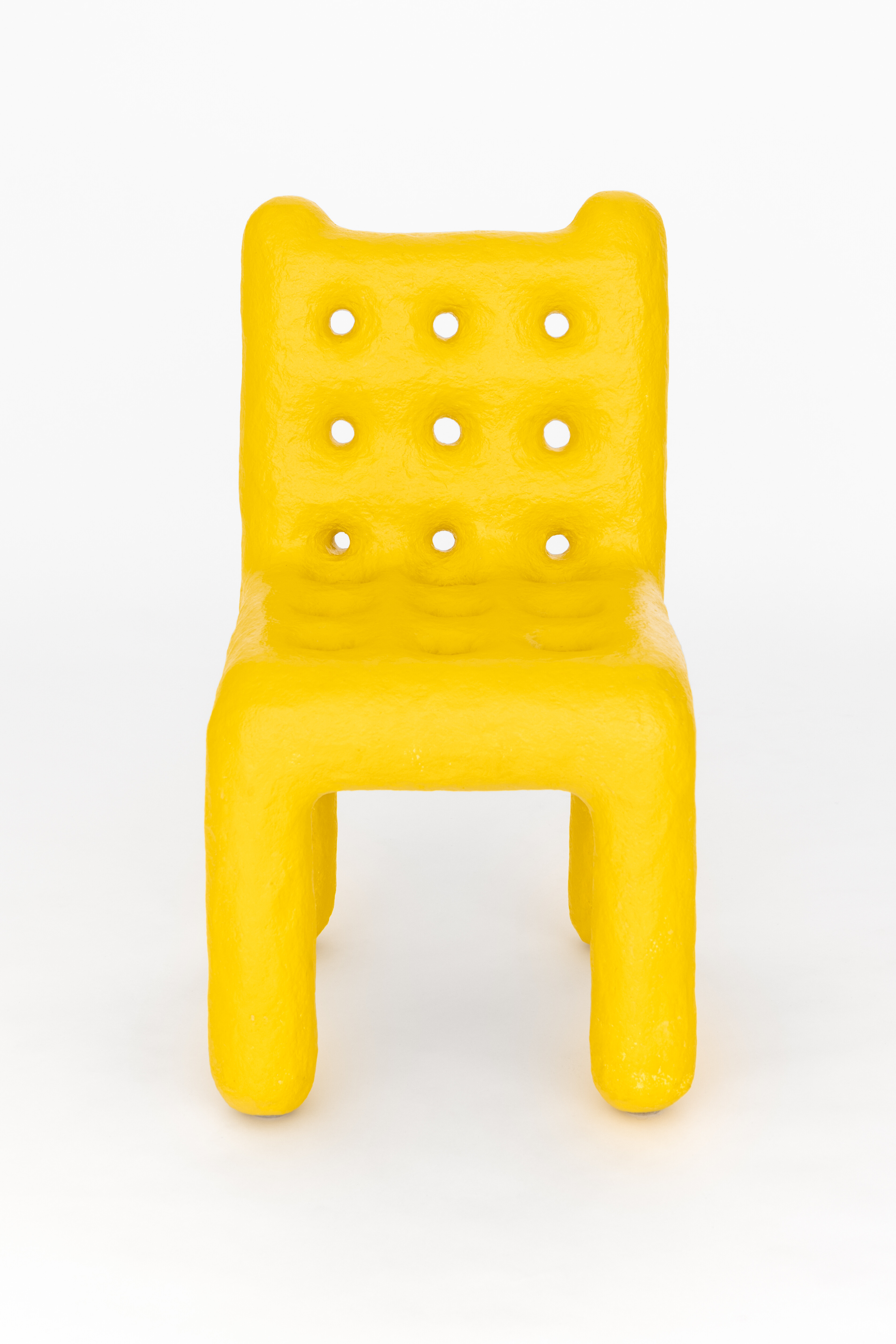A Riddle Wrapped in a Mystery Wrapped in an Enigma
Should designers communicate their own intentions clearly? Certainly, that is what most of the profession seems to think. Ever since modernist principles of clarity and transparency were first established, they have served as a solid foundation: hold fast to principles like “truth to materials,” and you won’t go far wrong. In these three objects, however, we see a total rejection of that accepted wisdom.
Let’s begin (out of respect, if for no other reason) with Enigma Stool, by the late, great Italian designer Alessandro Mendini. All his career, he said in an interview toward the end of his life, he tried to make “very enigmatic objects: not painting, not industrial design, not sculpture, but something very mixed.” The little stool exemplifies that approach. While certainly functional, it has the lines of a Brancusi and the inscrutable quality of a sacred totem. Despite its compactness and visual resolution, the object is an unstable compound.
Let’s begin (out of respect, if for no other reason) with Enigma Stool, by the late, great Italian designer Alessandro Mendini. All his career, he said in an interview toward the end of his life, he tried to make “very enigmatic objects: not painting, not industrial design, not sculpture, but something very mixed.” The little stool exemplifies that approach. While certainly functional, it has the lines of a Brancusi and the inscrutable quality of a sacred totem. Despite its compactness and visual resolution, the object is an unstable compound.
And this is absolutely the chemical formula of many young designers today, too, including Misha Kahn and Thomas Barger (who worked briefly in Kahn’s studio as an assistant). Kahn’s eccentrically anthropomorphic Scratchy — the title could refer to the work’s dominant texture, or it could be a joke about cats — strolls right past the various categories that Mendini enumerated. Its materiality is strictly casual, with glass baubles, silky fringe, and a patchy woven sheath. Yet it is ambitious in scale and conception. Like the queen of a drag ball, that mixed-up-ness is precisely what gives it such confident energy.
Barger’s Passion of the Hole Chair — another wonderful title — is made in the designer’s primary material, paper pulp, in a butter-yellow hue. Is it meant to be wholesome? Homoerotic? Both? In recent years, as the words “trans” and “queer” (as a verb) have gained currency, the idea of being neither this nor that has become ever more attractive to ever more people. It suggests to them a blissful freedom from established frameworks. It that enigmatic? Depends who you are, and who you want to be.
DNA is a collaborative essay project, intertwining three gallery programs into a single, generative presentation.





